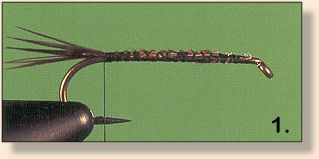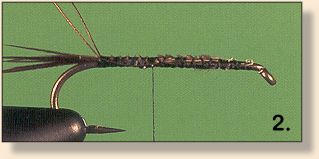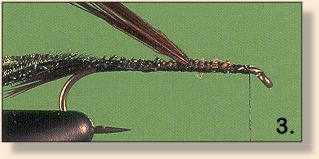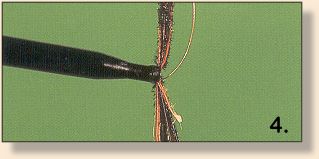
4. Stroke the peacock herl together and lay them along one side of
the wire dubbing loop. Grap both the wire and herl using a pair
of electrician's pliers.
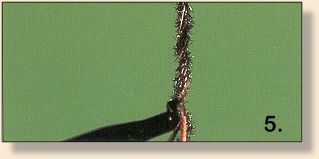
5. Spin the copper wire loop and peacock tightly together.
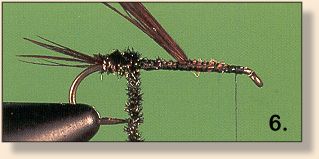
6. Wind the twisted peacock body material forwards to the eye of the
hook. Taper the abdomen to the wingcase tie-in point.
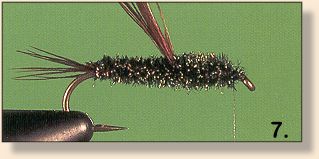
7. Carry the body material in front of the wingcase and form the
thorax. Overlap the wraps as necessary so the thorax is larger than
the abdomen. Tie off and trim the excess material, be careful not
to crowd the head area.
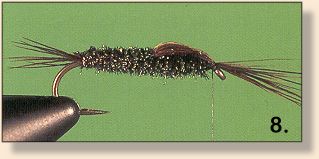
8. Gather the wingcase material and pull it over the top of the thorax.
Holding the wingcase with the right hand for (right-handed tiers), secure
the wingcase in place using the left hand. Use 3 or 4 wraps only. Do
not trim the tips.
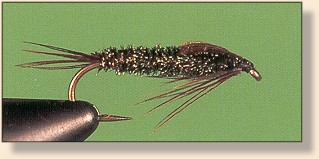
9. The legs can be tied under as a beard, semi-circular underneath the
thorax or divided along each side of the fly. I prefer a beard or
semi-circular hackle for my Halfbacks. Gather the tips of the wingcase
material and sweep them directly under the thorax. Hold them in
place using the left thumb and forefinger. Secure the legs using a
minimum number of thread wraps. Build a neat head, whip finish and
apply head cement.
Fishing Tip:
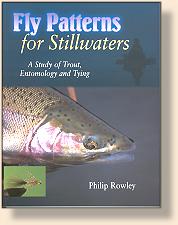 Try using this version around weed beds using an intermediate line
and a methodical hand-twist retrieve. Legendary Kamloops fly-fisher,
the late Hebe Smith, said if the fish were on scuds, tie on a
Halfback. Scuds are a prominent menu item during the fall as trout
fatten up for winter. But don't be limited to using this fly during
the latter part of the season. I can't think of a better searching
pattern than a Halfback. ~ Philip Rowley
Try using this version around weed beds using an intermediate line
and a methodical hand-twist retrieve. Legendary Kamloops fly-fisher,
the late Hebe Smith, said if the fish were on scuds, tie on a
Halfback. Scuds are a prominent menu item during the fall as trout
fatten up for winter. But don't be limited to using this fly during
the latter part of the season. I can't think of a better searching
pattern than a Halfback. ~ Philip Rowley
|



